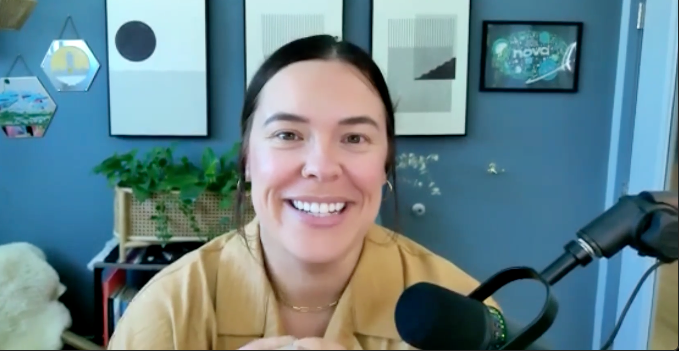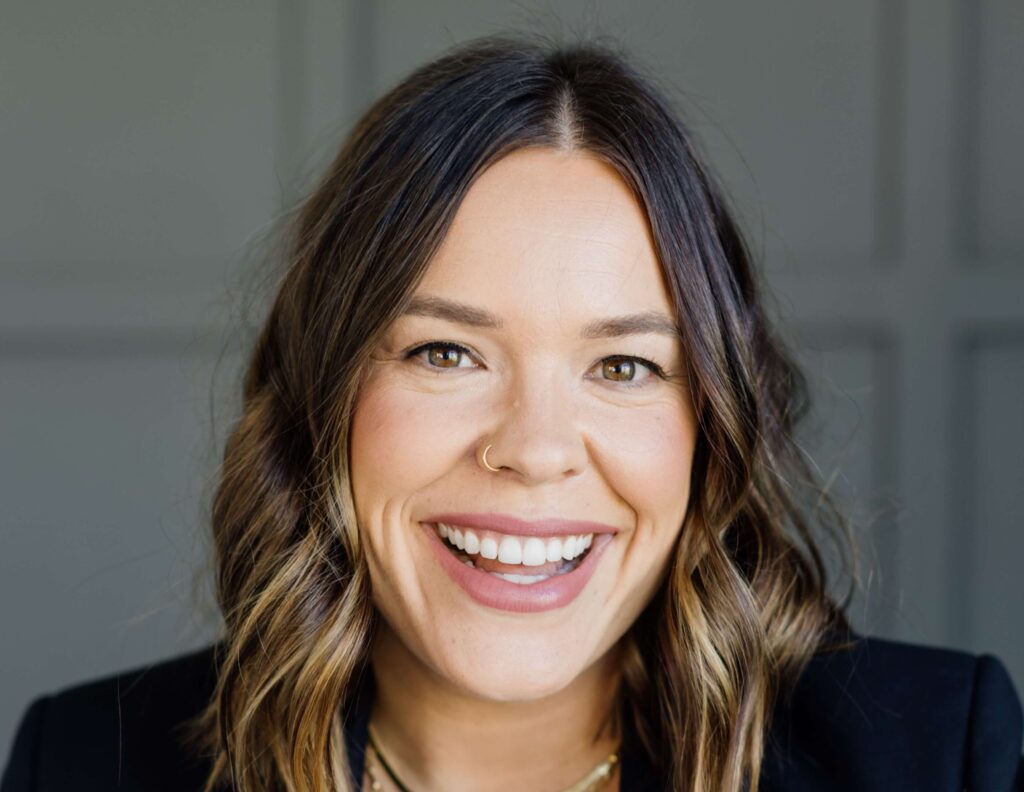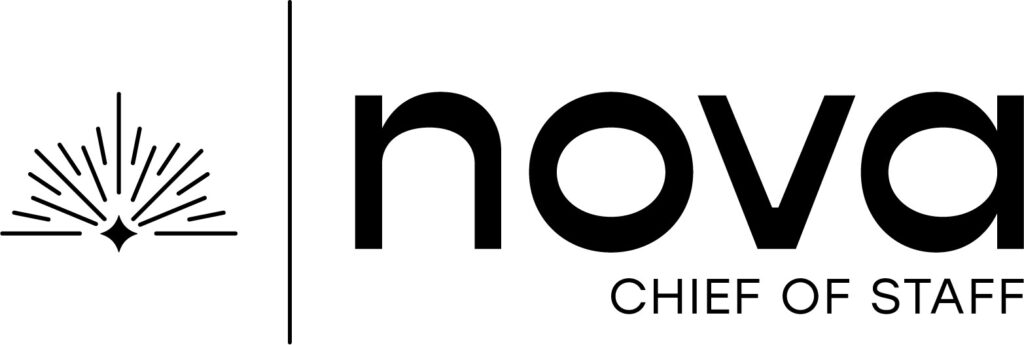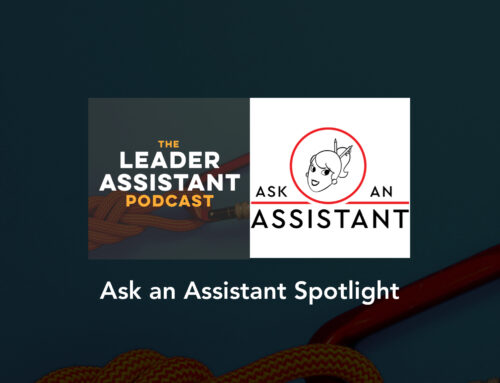Maggie Olson is the Founder of Nova Chief of Staff, the premier destination for Chief of Staff education and development.
In this episode of The Leader Assistant Podcast, Maggie dives into the fact that change management is all about the people. She discusses how to approach change, message change, plan for change, and execute change, from the top.
CONNECT WITH MAGGIE
ABOUT MAGGIE
Maggie Olson is the Founder of Nova Chief of Staff, the premier destination for Chief of Staff education and development. As the first Chief of Staff to a president at a Fortune 40 company — who led a multibillion-dollar business with 5,000+ employees — Maggie built the president’s Chief of Staff model from the ground up. Maggie has 20 years’ experience leading large teams and has spent her career focused on both customer and employee experience at companies including T-Mobile, Nordstrom, and Starbucks. In addition to operating the Nova Chief of Staff Certification course, Maggie is a fractional Chief of Staff focused on helping mission-driven, for-profit startup founders scale their businesses quickly. In her spare time, Maggie loves spending time outside with her husband, their animals, and their 1-year-old, Max!
–––
THE LEADER ASSISTANT PODCAST IS PRESENTED BY NOVA CHIEF OF STAFF
Calling all Executive Assistants: Are you looking for a way to elevate your skills or earn that promotion you’ve been eyeing? Nova Chief of Staff’s online certification course provides you with the knowledge and confidence you need to stand out on the job. Whether you want to land your dream position or level up in your current role, Nova’s self-paced course gives you hands-on practice doing what Chiefs of Staff do every day.
Visit leaderassistant.com/nova to learn more and secure your spot!
–––
THE LEADER ASSISTANT PREMIUM MEMBERSHIP
To learn more about how you can join growth-minded Leader Assistants, check out our Leader Assistant Premium Membership for ongoing training, coaching, and community.
THE LEADER ASSISTANT BOOK
Download the first 3 chapters of The Leader Assistant: Four Pillars of Game-Changing Assistant for FREE here or buy it on Amazon and listen to the audiobook on Audible. Also, check out the companion study guide, The Leader Assistant Workbook, to dig deeper.
LEADER ASSISTANT LIVE EVENTS
Check out our constantly updated schedule of events for admins and assistants at LeaderAssistantLive.com.
JOIN THE FREE COMMUNITY
Join the Leader Assistant Global Community for bonus content, job opportunities, and to network with other assistants who are committed to becoming leaders!
SUBSCRIBE
Subscribe to The Leader Assistant Podcast so you don’t miss new episodes!
You can find the show on Apple Podcasts, Spotify, Google Podcasts, Pandora, and Stitcher.
Join my email list here if you want to get an email when a new episode goes live.
LEAVE A REVIEW
If you’re enjoying the podcast, please take 2 minutes to rate and review the show on Apple Podcasts here. Each review helps me stay motivated to keep the show going!
THE LEADER ASSISTANT BOOK
Download the first 3 chapters of The Leader Assistant: Four Pillars of Game-Changing Assistant for FREE here or buy it on Amazon and listen to the audiobook on Audible. Also, check out the companion study guide, The Leader Assistant Workbook, to dig deeper.
LEADER ASSISTANT LIVE EVENTS
Check out our constantly updated schedule of events for admins and assistants at LeaderAssistantLive.com.
JOIN THE FREE COMMUNITY
Join the Leader Assistant Global Community for bonus content, job opportunities, and to network with other assistants who are committed to becoming leaders!
SUBSCRIBE
Subscribe to The Leader Assistant Podcast so you don’t miss new episodes!
You can find the show on Apple Podcasts, Spotify, Google Podcasts, Pandora, and Stitcher.
Join my email list here if you want to get an email when a new episode goes live.
LEAVE A REVIEW
If you’re enjoying the podcast, please take 2 minutes to rate and review the show on Apple Podcasts here. Each review helps me stay motivated to keep the show going!
–––
EPISODE TRANSCRIPT
00:00:05.915 –> 00:00:13.515
<v SPEAKER_2>The Leader Assistant Podcast exists to encourage and challenge assistants to become confident, game-changing leader assistants.
00:00:23.707 –> 00:00:33.367
JEREMY: Hey friends, the Nova Chief of Staff certification course is one of the most popular professional development resources for growth-minded leader assistants like you.
00:00:33.367 –> 00:00:50.867
JEREMY: With dozens of templates, self-paced learning, multiple instructor touchpoints, and peer engagement, Nova alumni walk away empowered and confident to level up as an assistant or even negotiate a promotion to a Chief of Staff role.
00:00:51.227 –> 00:00:59.187
JEREMY: With well over 500 students across 22 countries, Nova is the top spot for Chief of Staff learning and development.
00:00:59.187 –> 00:01:01.947
JEREMY: Join the movement today at leaderassistant.com/nova.
00:01:03.887 –> 00:01:05.167
JEREMY: That’s leaderassistant.com/nova.
00:01:09.187 –> 00:01:11.467
JEREMY: Hey friends, welcome to The Leader Assistant Podcast.
00:01:11.467 –> 00:01:13.387
JEREMY: It’s episode 307.
00:01:13.387 –> 00:01:17.387
JEREMY: You can check out the show notes for this conversation at leaderassistant.com/307.
00:01:20.427 –> 00:01:29.887
JEREMY: Today, I’m speaking with my friend Maggie Olson again, and Maggie is going to talk all about how to support change management in the C-suite.
00:01:29.887 –> 00:01:37.367
JEREMY: Not like there’s any change going on in my world as an assistant or in you all listening.
00:01:37.367 –> 00:01:44.807
JEREMY: I’m sure nothing ever changes in your day-to-day as you assist crazy executives.
00:01:44.807 –> 00:01:51.567
JEREMY: Of course, I’m joking, there’s lots of change, so I’m excited, Maggie, to have you back on and chat about this topic.
00:01:51.567 –> 00:01:54.087
MAGGIE: Yeah, I’m excited to be here.
00:01:54.087 –> 00:02:04.807
MAGGIE: As I was preparing, it’s wild how much change is happening in the C-suite, and I almost think that the chief of staff role is like the change manager role.
00:02:04.807 –> 00:02:16.427
MAGGIE: A lot of senior EAs, I’m sure you feel the same way because we’re dealing with the same major projects, major initiatives, that trickle down from the C-suite through the company, through the organization.
00:02:16.427 –> 00:02:28.387
MAGGIE: It’s literally all change management, but we can get into some specifics for sure around exactly why and how it’s important to approach change management as a chief of staff or senior EA.
00:02:28.387 –> 00:02:28.967
JEREMY: Perfect.
00:02:28.967 –> 00:02:29.467
JEREMY: Sounds good.
00:02:29.467 –> 00:02:31.387
JEREMY: I’m excited to have you dive in.
00:02:31.387 –> 00:02:31.827
JEREMY: Okay.
00:02:31.827 –> 00:02:33.067
MAGGIE: Awesome.
00:02:33.067 –> 00:02:43.547
MAGGIE: Well, I figured first, we would start with just the basic definitions of what is involved in change management.
00:02:43.547 –> 00:02:49.167
MAGGIE: So if you go online, you look around at some articles, here is what you hear.
00:02:49.167 –> 00:03:00.527
MAGGIE: Leadership that invites participation, involvement of stakeholders to inform strategy, communication that shapes new behaviors, training that unites organization, metrics that define success.
00:03:00.527 –> 00:03:09.127
MAGGIE: Another source talks about the five C’s of change management, Communicate with Clarity, Consistency, Confidence, Commitment, Care, and Concern.
00:03:09.127 –> 00:03:10.907
MAGGIE: Okay, I don’t disagree with any of these.
00:03:11.227 –> 00:03:12.867
MAGGIE: They’re all accurate.
00:03:12.867 –> 00:03:18.287
MAGGIE: And finally, in a stepped approach, step one, get the organization on board with the change.
00:03:18.287 –> 00:03:20.607
MAGGIE: Step two, develop change management strategy.
00:03:20.607 –> 00:03:22.287
MAGGIE: Step three, implement the change.
00:03:22.287 –> 00:03:25.307
MAGGIE: Step four, embed the change within the culture.
00:03:25.307 –> 00:03:29.047
MAGGIE: Step five, analyze the success of the change initiative.
00:03:29.047 –> 00:03:31.687
MAGGIE: So there’s definitely some common themes, right?
00:03:31.927 –> 00:03:36.067
MAGGIE: Measurement, consistency, communication.
00:03:36.067 –> 00:03:43.487
MAGGIE: But truly, what does this mean for a chief of staff or kind of that C-suite support senior executive assistant?
00:03:43.487 –> 00:03:52.727
MAGGIE: And what we were just talking about is that chiefs of staff are really well suited for major changes, cross collaborative initiatives.
00:03:52.727 –> 00:04:04.867
MAGGIE: And what’s quite beneficial is that many, most chiefs of staff and probably some senior executive assistants also own the rhythm of business for the executive leadership team or ELT.
00:04:04.867 –> 00:04:10.187
MAGGIE: If you hear me say ELT, executive leadership team, which is your leader’s executive team.
00:04:10.187 –> 00:04:20.647
MAGGIE: Because owning the rhythm of business is usually a chief of staff responsibility, this means that the chief of staff can ensure that important changes remain a top priority for the ELT.
00:04:20.647 –> 00:04:29.127
MAGGIE: They manage the agendas, they manage the rhythm of when we’re meeting about what, they help manage the follow up and the information gathering and the trickle down.
00:04:29.327 –> 00:04:35.167
MAGGIE: So obviously, chiefs of staff are well suited for change management.
00:04:35.167 –> 00:04:39.447
MAGGIE: But really, what does this look like?
00:04:39.447 –> 00:04:50.807
MAGGIE: If you’ve heard anything that I’ve come on the podcast before with Jeremy and talk about, it’s probably not surprising that I’m going to start with reflection and planning.
00:04:50.847 –> 00:04:52.707
MAGGIE: So reflection.
00:04:52.707 –> 00:05:05.987
MAGGIE: If your team is approaching a big change, really big or small, any change that’s going to affect your company, your culture, people, a team, the whole organization, you have to first reflect.
00:05:05.987 –> 00:05:07.567
MAGGIE: I’m going to go through some of these questions.
00:05:07.567 –> 00:05:20.447
MAGGIE: And there is a guide on our website at novachiefofstaff.com/resourcelibrary, where you can find all of this change management planning kickoff if you’re looking for it.
00:05:20.647 –> 00:05:22.987
MAGGIE: So let’s reflect.
00:05:22.987 –> 00:05:25.487
MAGGIE: What is the change being made?
00:05:25.487 –> 00:05:28.427
MAGGIE: Are we doing things as objectively as possible?
00:05:28.427 –> 00:05:29.807
MAGGIE: Who’s affected?
00:05:29.807 –> 00:05:32.067
MAGGIE: What are the objections going to be?
00:05:32.067 –> 00:05:34.087
MAGGIE: Who are the major stakeholders?
00:05:34.087 –> 00:05:41.387
MAGGIE: The ELT, other leaders in the company, different teams or one team, maybe HR or a training department?
00:05:41.387 –> 00:05:44.227
MAGGIE: As some examples, is there training involved?
00:05:44.227 –> 00:05:45.827
MAGGIE: That’s a whole nother work stream.
00:05:45.827 –> 00:05:47.227
MAGGIE: How will we measure success?
00:05:48.847 –> 00:05:51.047
MAGGIE: How are we thoughtful about timing?
00:05:51.047 –> 00:05:52.367
MAGGIE: Is it Christmas season?
00:05:52.367 –> 00:05:56.967
MAGGIE: Is this change going to affect company culture because it’s the holidays?
00:05:56.967 –> 00:06:04.747
MAGGIE: What kind of timing should we take into account to be thoughtful about our employee base with the change that we’re making?
00:06:05.887 –> 00:06:09.067
MAGGIE: And how do we connect with employees today?
00:06:09.067 –> 00:06:24.707
MAGGIE: Newsletter, leadership communication, like a note directly from the founder or the CEO or the business leader, bulletins from HR, downstream communication that’s just vocal from your leader, team leader communication in a meeting, right?
00:06:24.707 –> 00:06:28.147
MAGGIE: That’s how they get their updates, a daily meeting or a weekly or monthly meeting.
00:06:28.147 –> 00:06:33.187
MAGGIE: All-hand sessions, surveys, CEO coffee chats, those are just some.
00:06:33.187 –> 00:06:45.527
MAGGIE: Your company probably has a lot of different ways to reach your team, and it’s important to know what all of those ways are so that you can reach people the way that they want to be reached, the way that they will learn best.
00:06:45.527 –> 00:06:48.287
MAGGIE: Obviously, email is different than spoken.
00:06:48.287 –> 00:06:52.747
MAGGIE: It’s different than an intimate coffee chat with the CEO.
00:06:52.747 –> 00:06:58.747
MAGGIE: What are the right methods for the change and for your company and team culture?
00:06:58.747 –> 00:07:05.327
MAGGIE: Then are there any other questions or concerns that you think will come up based on the change that you’re thinking about here?
00:07:05.327 –> 00:07:13.407
MAGGIE: Now, after you reflect on these things, take notes, be super thorough, turn this into a project management style document.
00:07:13.867 –> 00:07:15.707
MAGGIE: Again, I’ve talked about this kind of thing before.
00:07:15.707 –> 00:07:24.447
MAGGIE: It’s highly relevant to approach projects like these and a lot of projects with a very strong executive project management approach is what I call it.
00:07:24.447 –> 00:07:29.207
MAGGIE: Again, we’ve got some templates for this on our site that I shared earlier in our resource library.
00:07:29.207 –> 00:07:34.267
MAGGIE: But document all of this into a project management style approach.
00:07:34.267 –> 00:07:41.207
MAGGIE: Ensure that you’ve met with stakeholders, ensure that you’ve updated your ELT and your leader, and then get to work.
00:07:41.367 –> 00:07:50.587
MAGGIE: Ensure that you have consistent sessions with your working team and consistent updates for your stakeholders and your executive leadership team.
00:07:50.587 –> 00:07:54.807
MAGGIE: Then that’s the reflection and getting things documented part.
00:07:54.807 –> 00:07:57.227
MAGGIE: Then you want to move into the planning.
00:07:57.227 –> 00:07:58.427
MAGGIE: We’re going to go a level deeper.
00:07:58.427 –> 00:08:04.287
MAGGIE: In a minute here, Jeremy and I can walk through some change management that we’ve done and led.
00:08:04.287 –> 00:08:06.767
MAGGIE: But in the planning phase, we go deeper.
00:08:06.767 –> 00:08:09.607
MAGGIE: It’s all documented and now we really get to work.
00:08:11.787 –> 00:08:17.087
MAGGIE: Identify the connection points for the change and write or plan those communications.
00:08:17.807 –> 00:08:20.867
MAGGIE: Earlier, I listed off all the different ways we connect with employees.
00:08:20.867 –> 00:08:25.827
MAGGIE: Which ways are we going to communicate this change based on our options?
00:08:25.827 –> 00:08:32.867
MAGGIE: Start documenting those, start putting the Google Sheets together, the Word documents, getting things organized and ready to go.
00:08:32.867 –> 00:08:35.967
MAGGIE: Map out the training if this is a change that requires some training.
00:08:36.587 –> 00:08:43.947
MAGGIE: Build the dashboard or the metric reporting system so that you can measure success of this change if that’s applicable.
00:08:43.947 –> 00:08:46.787
MAGGIE: Write supporting documentation that you may need.
00:08:46.787 –> 00:08:54.907
MAGGIE: Maybe you have a little website page on your company website or you’re sending out PDFs around whatever this change might be.
00:08:54.967 –> 00:09:00.787
MAGGIE: And then map out the communication touch points with dates and timing and document links.
00:09:00.787 –> 00:09:01.707
MAGGIE: More is better.
00:09:01.707 –> 00:09:07.867
MAGGIE: And as I mentioned earlier, as many different styles of communication, the better.
00:09:07.867 –> 00:09:08.947
MAGGIE: We all learn differently.
00:09:08.947 –> 00:09:09.987
MAGGIE: Some people prefer an email.
00:09:09.987 –> 00:09:11.427
MAGGIE: Some people prefer in-person.
00:09:11.427 –> 00:09:21.927
MAGGIE: Some people prefer or need multiple different kinds of communication to really understand and hear the message that’s being shared with them.
00:09:23.047 –> 00:09:25.207
MAGGIE: And then really, you’re implementing the change.
00:09:25.207 –> 00:09:29.587
MAGGIE: And from here, there’s so many different variations of what this change could be.
00:09:29.587 –> 00:09:31.247
MAGGIE: And we’ll talk about some examples.
00:09:31.247 –> 00:09:36.407
MAGGIE: But at this point, it’s all about follow through and follow up.
00:09:36.407 –> 00:09:40.287
MAGGIE: You’re connecting with your employee base through feedback.
00:09:40.287 –> 00:09:41.287
MAGGIE: Maybe it’s a survey.
00:09:41.287 –> 00:09:42.387
MAGGIE: Maybe it’s a touch point.
00:09:42.387 –> 00:09:48.347
MAGGIE: Maybe you’re bubbling up feedback from downstream teams to your C-suite leadership team.
00:09:48.347 –> 00:09:54.627
MAGGIE: Go back to the communication styles and ensure that you’ve gotten the message across.
00:09:54.627 –> 00:10:02.107
MAGGIE: Continue to follow up even if it feels like, oh, we’re on to 20 new projects this week and that was a couple weeks ago.
00:10:02.107 –> 00:10:07.547
MAGGIE: Go back and follow up and retro, how did your team do on that change management?
00:10:07.547 –> 00:10:09.947
MAGGIE: Is there still anything that needs to be done?
00:10:09.947 –> 00:10:10.987
MAGGIE: So I’m going to pause there.
00:10:10.987 –> 00:10:12.607
MAGGIE: Jeremy, what did I miss?
00:10:12.607 –> 00:10:17.127
MAGGIE: Did I cover the big pieces that you would encounter in change management?
00:10:18.047 –> 00:10:28.607
JEREMY: Yeah, I think those are super great high level overview and even just the modes of communication being important.
00:10:28.607 –> 00:10:35.187
JEREMY: It’s, you know, some people think, oh, we need to communicate this change, so we’re going to send an email and that’s it.
00:10:35.187 –> 00:10:52.927
JEREMY: And it’s like, well, the engineering team doesn’t read emails or the other team, this marketing team is living on Slack all day and there was no communication on Slack or we had a company-wide all hands and nobody mentioned it.
00:10:52.927 –> 00:11:02.387
JEREMY: And so just having to use all those different modes of communication to broadcast the changes.
00:11:02.387 –> 00:11:09.987
JEREMY: And then it also allows for people to push back and have questions and provide feedback along the way.
00:11:10.307 –> 00:11:35.347
JEREMY: And so I guess my question to you then is maybe is there a time or challenge that you faced in your personal career where the change management was maybe not going so well, people were really resistance or it was just a challenge, change management challenge?
00:11:35.347 –> 00:11:37.847
JEREMY: Anything you want to share there?
00:11:37.847 –> 00:11:39.527
MAGGIE: Yeah.
00:11:39.527 –> 00:11:40.447
MAGGIE: Oh my gosh.
00:11:40.447 –> 00:11:49.747
MAGGIE: It’s so funny thinking back about all of the experiences with managing projects and trickling everything down from C-suite through the organization.
00:11:50.827 –> 00:12:07.647
MAGGIE: You know, one thing is you were talking Jeremy that I wanted to add, which will definitely show up here in my example, is the need for your C-suite leader to back up the change and communicate in their own way to their people, the way that their people expect them to, about the change.
00:12:07.647 –> 00:12:19.627
MAGGIE: A lot of change is about positioning and marketing, really, like how is this change benefiting the person who’s receiving it or benefiting the company and how are we positioning it, almost from PR perspective?
00:12:19.627 –> 00:12:32.607
MAGGIE: And it’s important that your CEO or business leader is really involved in helping position all of this, even if they may not be the most major stakeholder, but it’s a decision that affects them or people who report to them.
00:12:32.607 –> 00:12:42.227
MAGGIE: So something to think about there is make sure you include your CEO or business leader support in your project management of this kind of a thing.
00:12:42.227 –> 00:12:58.947
MAGGIE: But the fun example I have for a difficult project that there’s just no getting away from it being difficult is remapping a seating chart for an entire organization on my leader’s team.
00:12:58.947 –> 00:13:14.127
MAGGIE: Now, the leaders on my leader’s team are VP level, very senior with teams of 30 to 60, maybe 15, 30, 45, 60-ish on each of these four or five teams.
00:13:14.967 –> 00:13:24.087
MAGGIE: With return to office and COVID moving behind us, we had to figure out, okay, how do we get everybody back in the office and where the heck are they all going to sit?
00:13:27.607 –> 00:13:31.987
MAGGIE: I’ll run through some of the application of the framework I was talking about.
00:13:31.987 –> 00:13:34.987
MAGGIE: But first of all, what’s the change being made?
00:13:34.987 –> 00:13:37.567
MAGGIE: Okay, people are getting new seats.
00:13:37.567 –> 00:13:43.207
MAGGIE: This is a highly personal change that people feel very emotional about.
00:13:44.387 –> 00:13:49.947
MAGGIE: My next framework reflection question here is, are we doing things as objectively as possible?
00:13:50.587 –> 00:13:59.587
MAGGIE: In this scenario, I don’t think the best person to make this change would be one of the existing leaders of the teams that are being moved.
00:13:59.587 –> 00:14:21.067
MAGGIE: I think a better person would be someone like the Chief of Staff who really is most connected to the leader of the business and a little bit agnostic to the individual teams and can try to make the most objective decision without being as emotionally charged or having emotional relationships in to where people are sitting.
00:14:21.067 –> 00:14:26.167
MAGGIE: We know that everybody is affected and we want to map out what those objections are.
00:14:26.167 –> 00:14:38.687
MAGGIE: So clearly objections, well, kind of where we went wrong here is we figured that we were making everybody happy, that all 60 people were going to have to be on the north side because they were all next to each other.
00:14:38.687 –> 00:14:44.327
MAGGIE: And the team with 30 was going to have to be over here, which was near the tunnel to the food, so they would be happy.
00:14:45.587 –> 00:14:47.007
MAGGIE: Our team was really small.
00:14:47.007 –> 00:14:55.327
MAGGIE: My kind of Chief of Staff team was smaller, so we were going to sit in the small area with 15 of us or so.
00:14:55.327 –> 00:14:59.227
MAGGIE: And things just kind of fell into place and made sense that way.
00:14:59.227 –> 00:15:05.727
MAGGIE: But wow, we did not anticipate the emotions that were involved in a decision like this.
00:15:05.727 –> 00:15:09.847
MAGGIE: So there was a team upset because they were kind of under a stairwell.
00:15:09.847 –> 00:15:13.027
MAGGIE: We thought that it was a great spot because they were near the tunnel to the food.
00:15:13.107 –> 00:15:17.287
MAGGIE: There was a team that would rather have been split up, which just makes no sense to us.
00:15:17.287 –> 00:15:18.067
JEREMY: Under the stairs?
00:15:18.067 –> 00:15:18.867
JEREMY: Come on.
00:15:18.867 –> 00:15:21.467
JEREMY: Under the stairs is like the safest place to be in a tornado.
00:15:21.467 –> 00:15:22.247
JEREMY: Come on.
00:15:22.247 –> 00:15:23.907
MAGGIE: I know, safe, cute, cozy.
00:15:23.907 –> 00:15:25.827
MAGGIE: What’s wrong with that?
00:15:25.827 –> 00:15:31.527
MAGGIE: My team was small and there was a small pod of desks next to like an amazing window.
00:15:31.527 –> 00:15:35.907
MAGGIE: So we took that spot and we got some flak for that, but nobody else would fit there.
00:15:35.907 –> 00:15:40.027
MAGGIE: So it’s a difficult thing to manage in terms of the change.
00:15:40.167 –> 00:15:57.727
MAGGIE: And as I was mentioning a few minutes ago, I had to talk to my business leader and say, I need you to communicate with your VPs and like, feel free if you want to make some changes to my recommendation here, like we can totally do that, but here’s what I recommend and why.
00:15:57.727 –> 00:16:02.867
MAGGIE: He had signed off on all that and I needed him to kind of be the final voice to say, this is why we’re doing it.
00:16:02.867 –> 00:16:03.827
MAGGIE: It is what it is.
00:16:03.827 –> 00:16:05.607
MAGGIE: This is the best option for our company.
00:16:05.607 –> 00:16:07.027
MAGGIE: Like, let’s kind of move on.
00:16:08.347 –> 00:16:16.307
MAGGIE: But it’s a tricky one when so many people are involved and leaders are also wondering like kind of what’s going on.
00:16:16.307 –> 00:16:21.767
MAGGIE: You have to manage the messaging all the way down to the employees who are moving around.
00:16:21.767 –> 00:16:25.287
MAGGIE: So at the end of the day, it was really about kind of, we’re all signing off.
00:16:25.287 –> 00:16:26.027
MAGGIE: This is what it is.
00:16:26.027 –> 00:16:30.607
MAGGIE: I had some other leaders kind of speak up and say, you know, these are great spots.
00:16:30.607 –> 00:16:31.667
MAGGIE: We’re good to go.
00:16:31.667 –> 00:16:34.647
MAGGIE: And the team rallied kind of held hands and moved forward with it.
00:16:34.727 –> 00:16:42.507
MAGGIE: And then we managed the change management to the employee base through various communications and land desk moves.
00:16:42.507 –> 00:16:44.847
MAGGIE: And we were super organized and gave a lot of transparency.
00:16:44.847 –> 00:16:46.527
MAGGIE: So it all worked out.
00:16:46.527 –> 00:16:53.807
MAGGIE: But there’s a lot of change like that, that really you can’t get away from having to make the difficult decisions and having to make the change.
00:16:53.807 –> 00:17:03.827
MAGGIE: And you just have to do it in the best way that you can and go back to the fundamentals of really communicating and caring about your people and bubbling feedback up and making more changes if you need to.
00:17:05.227 –> 00:17:09.467
JEREMY: Yeah, and it’s especially hard with that big of a team.
00:17:09.467 –> 00:17:15.867
JEREMY: And, you know, it’s like you can’t, you’ll never make any decisions if you try to please everyone.
00:17:15.867 –> 00:17:22.447
JEREMY: And so you just try to take the feedback, what’s really important to your team, what’s really important to your team.
00:17:22.447 –> 00:17:50.187
JEREMY: I remember we had a similar deal where we moved offices and there was one of those things where we were a small startup company trying to save cash and we’re like, well, let’s just spend a Friday, Saturday moving most of stuff ourselves and setting everything up so that we don’t lose very many days of productivity on the other end.
00:17:50.187 –> 00:17:50.427
MAGGIE: Yeah.
00:17:50.427 –> 00:17:57.687
JEREMY: And so, you know, we went in and worked some overtime over the weekend to get everything set up and ready.
00:17:58.467 –> 00:18:09.627
JEREMY: And then one of the team leads was a little bit frustrated and dramatic about where the desks were and where things were set up and how things were set up.
00:18:09.627 –> 00:18:14.827
JEREMY: And we’re like, you could have showed up and helped us and had a little more input.
00:18:16.907 –> 00:18:18.587
JEREMY: That team lead is no longer with us.
00:18:18.587 –> 00:18:35.327
JEREMY: But there’s just that culture thing of like, sometimes you just have to make decision and move forward and not take, especially in a startup environment, not take up too much more time from building the product and moving forward.
00:18:35.327 –> 00:18:36.227
MAGGIE: Yeah.
00:18:36.227 –> 00:18:36.967
JEREMY: So yeah.
00:18:36.967 –> 00:18:37.247
MAGGIE: Yeah.
00:18:37.247 –> 00:18:47.507
MAGGIE: I mean, the cool thing about the Chief of Staff role and the Senior EA role, if you’re acting in this capacity, is that you are the voice of your employee base.
00:18:47.507 –> 00:18:57.167
MAGGIE: You have such a pulse on the culture of your company, or your team, or your business, that you can bring those concerns to your executive leadership team.
00:18:57.167 –> 00:19:04.687
MAGGIE: You can ensure that it’s talked about in some session during your Rhythm of Business schedule.
00:19:04.687 –> 00:19:30.827
MAGGIE: You can be the advocate for people, but it’s important that it’s thought about ahead of time, that you’re reflecting, you’re planning, you’re approaching with a strong project management base, so that you can really solve those problems and listen to your people, and then help them feel heard, because you’re really approaching with a full circle mentality, if that tracks.
00:19:30.827 –> 00:19:33.367
JEREMY: Yeah, definitely.
00:19:33.367 –> 00:19:33.707
JEREMY: Awesome.
00:19:33.707 –> 00:19:34.727
JEREMY: Well, this is great.
00:19:35.067 –> 00:19:41.447
JEREMY: Any other last tips or final words related to change management?
00:19:43.547 –> 00:19:55.327
MAGGIE: Nothing else probably related to change management, but we do have those, how to kick off a big change management template, some project management templates in our resource library at novachiefofstaff.com/resourcelibrary.
00:19:56.767 –> 00:19:59.187
MAGGIE: So feel free to help yourself there.
00:19:59.187 –> 00:20:01.747
MAGGIE: And I appreciate you having me on Jeremy.
00:20:01.747 –> 00:20:03.047
JEREMY: Also, Maggie, thank you so much.
00:20:03.047 –> 00:20:06.267
JEREMY: And I’ll put that link in the show notes as well.
00:20:06.267 –> 00:20:09.527
JEREMY: leaderassistant.com/307.
00:20:09.527 –> 00:20:20.407
JEREMY: And of course, as always, reach out to Maggie on LinkedIn or Novachiefofstaff and their team and find out more about all the resources they’re doing in their course and everything.
00:20:20.407 –> 00:20:28.827
JEREMY: And so great, great resources that I’m excited to share and extra excited because I didn’t have to produce them.
00:20:28.827 –> 00:20:32.047
JEREMY: And she did her and her team did a great job producing them.
00:20:32.047 –> 00:20:33.147
MAGGIE: So thank you.
00:20:33.147 –> 00:20:34.387
MAGGIE: Thank you so much.
00:20:34.387 –> 00:20:35.127
MAGGIE: Thank you.
00:20:35.127 –> 00:20:35.527
MAGGIE: Awesome.
00:20:35.527 –> 00:20:36.727
MAGGIE: Well, you have a good one.
00:20:47.462 –> 00:20:49.502
<v SPEAKER_2>Please review on Apple Podcasts.
00:20:56.240 –> 00:20:57.940
<v SPEAKER_2>goburrows.com.








